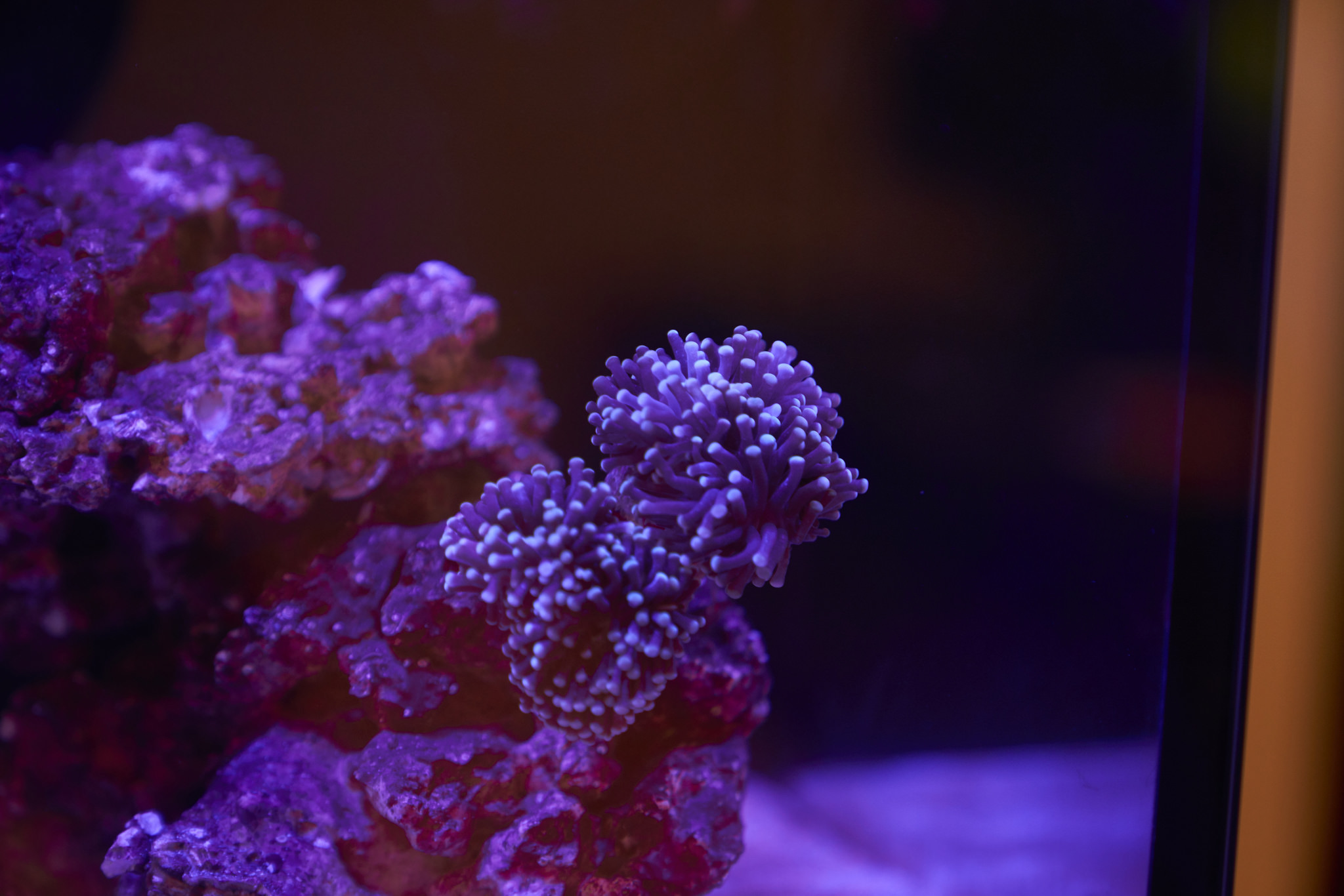I purchased a torch and frogspawn yesterday. My tank is a month old and had a very fast cycle. I added a clown about 3 weeks ago and a bicolor blenny a week ago, both of which are thriving. I also have a leather (which is angry -- I think he might be shedding), a neon toadstool (thriving) and a hammer (thriving).
I've been testing my water every day (I know it's excessive but I also know I'm moving perhaps a little fast so I want to keep my inhabitants safe) but I haven't seen fluctuations in anything. My parameters are, and have been (after the initial cycle):
Ammonia 0
Nitrite 0
Phosphate 0
Nitrate 2
Alk 8.5
Calcium 420
pH 8.3
Salinity 1.0255
Temp 80
I did pass a cyano stage and now have a manageable amount of brown algae (or dinoflagellates?) on my sand bed but again, sparse manageable amounts.
The corals were acclimated via float method and by adding / dumping water. I then placed them towards the bottom of the tank (although my tank is quite shallow, about 13" high).
I have 2 gen 1 AI Hydra 26's mounted 8.5" above the tank running:
White 34
DB 34
RB 34
Violet 30
UV 24
Green 10
Red 10
The frogspawn appears to be bloated? And the torch has one little path that appears to be bleaching. I did screw up and bump the torch on the sand bed lightly; I'm wondering if that's where it hit
 DSC01017 by Andrew English, on Flickr
DSC01017 by Andrew English, on Flickr
 DSC01016 by Andrew English, on Flickr
DSC01016 by Andrew English, on Flickr
These pics were taken right when the lights start to ramp up so the were just coming out. They're already extending more but the symptoms remain.
I'm thinking it's either too much light or too little? The shop I purchased from runs the same lights but I believe the torch may have been getting less light, so I purposefully placed him at the edge of the tank where the light falloff occurs. The frogspawn is probably getting a little less light than at the LFS.
I've been testing my water every day (I know it's excessive but I also know I'm moving perhaps a little fast so I want to keep my inhabitants safe) but I haven't seen fluctuations in anything. My parameters are, and have been (after the initial cycle):
Ammonia 0
Nitrite 0
Phosphate 0
Nitrate 2
Alk 8.5
Calcium 420
pH 8.3
Salinity 1.0255
Temp 80
I did pass a cyano stage and now have a manageable amount of brown algae (or dinoflagellates?) on my sand bed but again, sparse manageable amounts.
The corals were acclimated via float method and by adding / dumping water. I then placed them towards the bottom of the tank (although my tank is quite shallow, about 13" high).
I have 2 gen 1 AI Hydra 26's mounted 8.5" above the tank running:
White 34
DB 34
RB 34
Violet 30
UV 24
Green 10
Red 10
The frogspawn appears to be bloated? And the torch has one little path that appears to be bleaching. I did screw up and bump the torch on the sand bed lightly; I'm wondering if that's where it hit
 DSC01017 by Andrew English, on Flickr
DSC01017 by Andrew English, on Flickr DSC01016 by Andrew English, on Flickr
DSC01016 by Andrew English, on FlickrThese pics were taken right when the lights start to ramp up so the were just coming out. They're already extending more but the symptoms remain.
I'm thinking it's either too much light or too little? The shop I purchased from runs the same lights but I believe the torch may have been getting less light, so I purposefully placed him at the edge of the tank where the light falloff occurs. The frogspawn is probably getting a little less light than at the LFS.
Last edited:

















